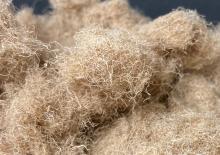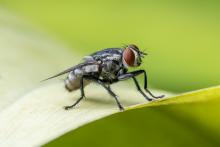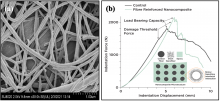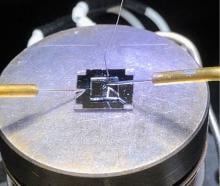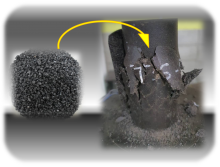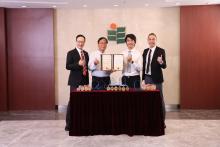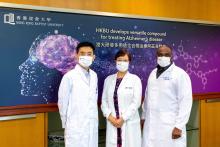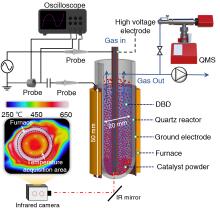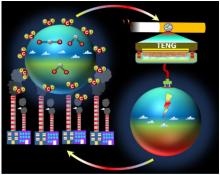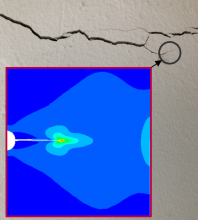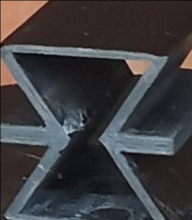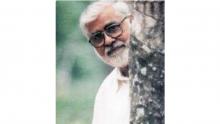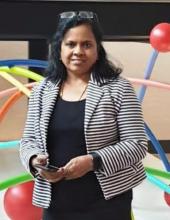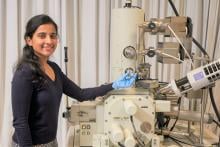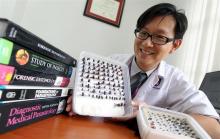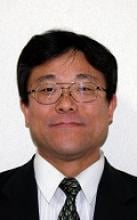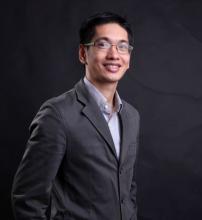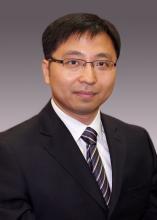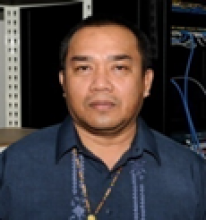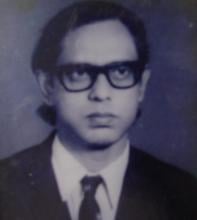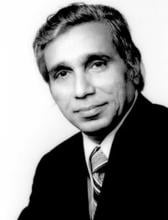Inventions
News
06 Apr 2023
The 2022 Asian Universities Student Entrepreneurship Ideation Challenge (AUSEIC) has concluded successfully with an online final pitch and award presentation. Start-up Bridge Neuro, founded by Victor Wong, a Year-3 student on the Doctor of Education Programme at EdUHK won the competition, in a field of 30 teams overall.
29 Mar 2023
An international team of scientists is helping to reduce carbon emissions into the atmosphere by exploring different natural fibres and blending the natural fibres in plastics to make light-weight and strong green composite materials for the construction and automotive industries.
24 Mar 2023
Scientists in Singapore converted fruit waste into a solar absorber called Mxene to develop an efficient and sustainable water desalination process.
20 Mar 2023
Scientists from Alliance University, Bangalore, Birla Institute of Technology Mesra, Inha University, Hanyang University, South Korea, and Newcastle University in Singapore have developed a new and straightforward approach to turn used COVID-19 facemasks into potential absorbent materials that can be employed for carbon capture from atmosphere.
19 Mar 2023
An international interdisciplinary team of researchers hailed from India, Malaysia, Singapore and Thailand has successfully developed a method of using chitosan from terrestrial insects to manufacture eco‐friendly polymer composite parts using the 3D printing method.
18 Mar 2023
Scientists restore impaired kidney for the first time, How fibre composite fails when wet, Cleaner fish recognize themselves in pictures 🖼️🐟& The source of black carbon in the sea. Read all in the latest Editor's Choice. Plus our magazine Asia Research News 2023 is out now 🎉!
16 Mar 2023
Annual innovation event brings together global innovators, entrepreneurs, researchers and scientists, and experts from various fields and industries to showcase their latest innovations, share ideas, and collaborate with industries to develop better technologies and solutions to shape our future. This is also a platform for innovators to meet potential investors and partners.
03 Mar 2023
Shaking the compact, lightweight device generates enough electricity to power 100 LEDs.
28 Feb 2023
A team of researchers from Universiti Teknologi Malaysia and Universiti Malaysia Pahang has successfully developed an electrospinning method for producing Nylon Nanofibres for use in carbon fibre composites to enhance the impact properties of carbon composites.
24 Feb 2023
Asia Research News monitors the latest research news in Asia. Some highlights that caught our attention this week are a robotic hand with a magic touch, a solution to reduce the negative effects of screen time in children, and a team charting dung beetles.
23 Feb 2023
Scientists from Oil Crops Research Institute (OCRI) of Chinese Academy of Agricultural Sciences (CAAS), Anhui Agricultural University (Anhui, China), Newcastle University in Singapore, and Huizhou Comvikin Biotechnology Co., Ltd (Guangdong, China) have developed a green and efficient approach to synthesize highly liposoluble and antioxidant L-ascorbyl esters by immobilized lipases.
21 Feb 2023
An effective, stable solid-state electrochemical transistor has been developed, heralding a new era in thermal management technology.
05 Feb 2023
Scientists from two Asian universities, namely Universiti Teknologi Malaysia (UTM) and Newcastle University in Singapore, have completed a study to understand how the mechanical behaviour of carbon fibre reinforced epoxy composite laminates could be compromised by moisture seepage.
27 Jan 2023
Asia Research News monitors the latest research news in Asia. Some highlights that caught our attention this week are a robot that can melt and reform, artificial skin that can sense objects before touching them, and the pause and reversal of the planet’s inner core’s spin.
16 Dec 2022
Scientists developed a novel device that predicts whether an ICU patient taken off mechanical ventilation is likely to suffer from respiratory emergencies, helping critical care teams to provide immediate life-saving interventions.
09 Dec 2022
Scientists from Universiti Teknologi Malaysia have reported a novel way to produce reinforced concrete materials using tin slag aggregates, which is a by-product of the smelting process. This way of producing concrete enables tin slag to become a useful material, as well as reducing the amount of natural resources used, which in turn contribute to reducing carbon footprint in the construction industry.
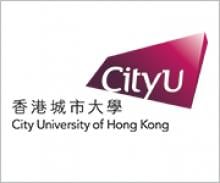
15 Nov 2022
A multinational team of researchers, co-led by a City University of Hong Kong (CityU) physicist, has found that a novel metallic crystal displays unusual electronic behaviour on its surface, thanks to the crystal’s unique atomic structure. Their findings open up the possibility of using this material to develop faster and smaller microelectronic devices.
28 Oct 2022
Asia Research News monitors the latest research news in Asia. Some highlights that caught our attention this week are a toothpaste that can be used in space, how to always win at a quantum game, and a trunk-inspired robot gripper.
17 Oct 2022
The Malaysia Technology Expo (MTE) 2022: SDG International Innovation Awards & Expo (SDGIIAE) returns for its 2nd edition and the awards encourage the development of innovative solutions for local and global challenges.
30 Sep 2022
The Education University of Hong Kong received 26 awards at the 7th International Invention Innovation Competition in Canada (iCAN) in 2022, including seven gold medals, three silver, five grand awards and 11 special prizes. It marked a new record high since the University’s first participation in 2018.
28 Sep 2022
Lingnan University (LU) in Hong Kong highly values research and knowledge transfer that generate social impact and demonstrate care for the community. LU honoured 72 LU faculty members for their outstanding performance in research and contributions to knowledge transfer in raising the community’s quality of life and contribution to society during the 2021/22 and 2022/23 academic years.
24 Aug 2022
A study led by researchers from Hong Kong Baptist University (HKBU) has demonstrated that a multifunctional organic compound named F-SLOH has the potential to treat Alzheimer’s disease (AD) at an early stage. The team found that it can inhibit the aggregation of amyloid-beta (Aβ), and reduce the hyperphosphorylation of tau proteins and neuroinflammation in the brain to improve the pathological features of AD. The findings have been published in the international academic journal Redox Biology.
22 Jul 2022
Nonthermal plasma (NTP) is used to activate CO2 molecules for hydrogenation into alternative fuels at low temperatures, also enabling the conversion of renewable electricity to chemical energy. Researchers from Tokyo Tech combined experimental and computational methods to investigate the hydrogenation pathway of NTP-promoted CO2 on the surface of Pd2Ga/SiO2 catalysts. The mechanistic insights from their study can help improve the efficiency of catalytic hydrogenation of CO2 and allows the engineers to design new concept catalysts.
18 Jul 2022
An international team of scientists from India and Singapore has successfully developed a novel method to recycle waste cigarette filters for use in making the triboelectric nano generator, a clean energy generating device.

15 Jul 2022
A team co-led by a City University of Hong Kong (CityU) neuroscientist has identified a key mechanism of a biological clock that ensures roundworms stay regular by defecating at steady intervals.
07 Jul 2022
A novel practical way of modelling cracking and toughening of fibre composite materials has been developed. The novel approach also revealed new insights on the fracture behaviour of fibres reinforcing a composite laminate during intralaminar cracking. The new way can be used to complement inspection of laminated structures that are used as primary structures in many industries.
05 Jun 2022
An international team of researchers, led by Changfang Zhao, from Nanjing University of Science and Technology, has developed a novel lightweight, high toughness auxetic structure made from plastic composite laminates. The auxetic structure may be used for constructing primary structures in the transport industry, such as electric vehicles, to maximize fuel efficiency.
26 May 2022
Empowering the innovators to transition their new inventions, technologies and products into manufacturing and commercialisation prospects
26 May 2022
Giants in History: Known as Mr. Natural Rubber, chemist and researcher B. C. Shekhar (17 November 1929 – 6 September 2006) introduced a number of technical innovations that helped put Malaysia’s natural rubber industry on the world map.
18 Apr 2022
An international team of researchers from India and Singapore has successfully developed a novel coating with enhanced water repellent properties using natural material from the waste crab shell.
Events
Sorry, no events coming up for this topic.
Researchers
Universiti Malaysia Sabah
Dr. Connie Cassy Ompok is an early childhood education expert and a Senior Lecturer at the Faculty of Psychology and Education, Universiti Malaysia Sabah. She Started her career in Early Childhood Education as a preschool teacher (2004-2007), a lecturer in early childhood education at the Malaysian Institute of Teacher Education (2008-2016) before serving as a Senior Lecturer in Early Childhood Education at UMS (2016 until now).
Universiti Teknologi MARA (UiTM)
Senior lecturer at School of Chemical Engineering, Universiti Teknologi MARA, Cawangan Pulau Pinang, Malaysia. He is also Head of Lab EMZI-UiTM Nanoparticles Colloids
Rabin Mahat is a result-oriented and multifaceted doctoral student in Experimental Condensed Matter Physics at The University of Alabama, USA. He is currently working under the guidance of Dr. Patrick LeClair, and Dr. Arunava Gupta. He received M.Sc. in Physics in 2013 from Tribhuvan University, Nepal. He also received his second M.Sc. in experimental Condensed Matter Physics from the University of Alabama in 2019. Rabin's main research is focused on the discovery of novel half-metallic Heusler compounds for potential spintronics device applications. He excels academic and professional expertise in process engineering, research procedures and material science.
Biomaterials Scientist working on surface engineering of medical implants used for the replacement of hip knee, cardiac and dental .
Nanyang Technological University
Dr. Sravya Tekumalla is currently a Principal Investigator in Nanyang Technological University, Singapore, where she works as a Presidential Postdoctoral Fellow. In addition, she also leads a small team of staff and students working in the domain of metal additive manufacturing (commonly known as 3D printing).
Hira Khalid is an associate professor at the Department of Chemistry of Forman Christian College University, Lahore, Pakistan.
Universiti Teknologi MARA (UiTM)
Dr Heo is currently a senior lecturer at the Department of Microbiology and Parasitology, Faculty of Medicine, Universiti Teknologi MARA, Malaysia.
Tohoku University
Director of Tohoku University's Tough Cyberphysical AI Research Center and expert in rescue robotics.
De La Salle University
Michael Angelo B. Promentilla is a Professor of Chemical Engineering and the head of the Waste and Resource Management Unit of the Center for Engineering and Sustainable Development Research (CESDR) at De La Salle University (DLSU).
The Chinese University of Hong Kong (CUHK)
Li Zhang is an Associate Professor in the Department of Mechanical and Automation Engineering (MAE) and an associate faculty member in Chow Yuk Ho Technology Centre for Innovative Medicine (TIM) and T Stone Robotics Institute (CURI) at The Chinese University of Hong Kong (CUHK). He is also the co-director of CAS SIAT-CUHK Joint Laboratory of Robotics and Intelligent Systems.
Professor in Agriculture and Education in the Iloilo Science and Technology University Leon Campus (ISAT U). Leon, ILOILO, PHILIPPINES
Giants in history
Tetsuya Theodore Fujita (23 October 1920 – 19 November 1998) was a Japanese-American meteorologist who created the Fujita scale that classifies the strength of tornadoes based on damage to structures and vegetation.
Chinese biochemist Cao Tianqin (5 December 1920 – 8 January 1995) discovered the myosin light chain, a subunit of myosin, a protein crucial for muscle contraction.
Fe Villanueva del Mundo (27 November 1911 – 6 August 2011) was a Filipina paediatrician who founded the Philippines’ first paediatric hospital.
Minoru Shirota (April 23, 1899 – March 10, 1982) was a Japanese microbiologist who invented the popular fermented drink Yakult.
Wu Lien-teh (10 March 1879 – 21 January 1960) was a Malaysian-born doctor who invented a mask that effectively suppressed disease transmission. Winning the prestigious Queen’s Scholarship enabled Wu to become the first Chinese student to study medicine at the University of Cambridge.
Physicist Narinder Singh Kapany (31 October 1926 – 4 December 2020) pioneered the use of optical fibres to transmit images, and founded several optical technology companies. Born in Punjab, India, he worked at a local optical instruments factory before moving to London for PhD studies at Imperial College. There, he devised a flexible fibrescope to convey images along bundles of glass fibres.
The field of solid-state ionics originated in Europe, but Takehiko Takahashi of Nagoya University in Japan was the first to coin the term ‘solid ionics’ in 1967. ‘Solid-state ionics’ first appeared in 1971 in another of his papers, and was likely a play on ‘solid-state electronics’, another rapidly growing field at the time.
Charles Kuen Kao (Nov. 4, 1933 to Sept. 23, 2018) was an engineer who is regarded as the father of fibre optics. His work in the 1960s on long distance signal transmission using very pure glass fibres revolutionized telecommunications, enabling innovations such as the Internet.
Sir Jagadish Chandra Bose (30 November 1858 – 23 November 1937) was a scientist and inventor who contributed to a wide range of scientific fields such as physics, botany and biology.
Abdus Suttar Khan (c. 1941 – 31 January 2008) was a Bangladeshi engineer who spent a significant part of his career conducting aerospace research with NASA, United Technology and Alstom.
Fazlur Rahman Khan (3 April 1929 – 27 March 1982) was a Bangladeshi-American structural engineer and architect who invented the tube principle, which formed the basis for modern skyscraper design.
Gregorio Y. Zara (8 March 1902 – 15 October 1978) was a Filipino engineer and physicist best remembered for inventing the first two-way video telephone. Zara’s video telephone invention enabled the caller and recipient to see each other while conversing, laying the foundation for video-conferencing



